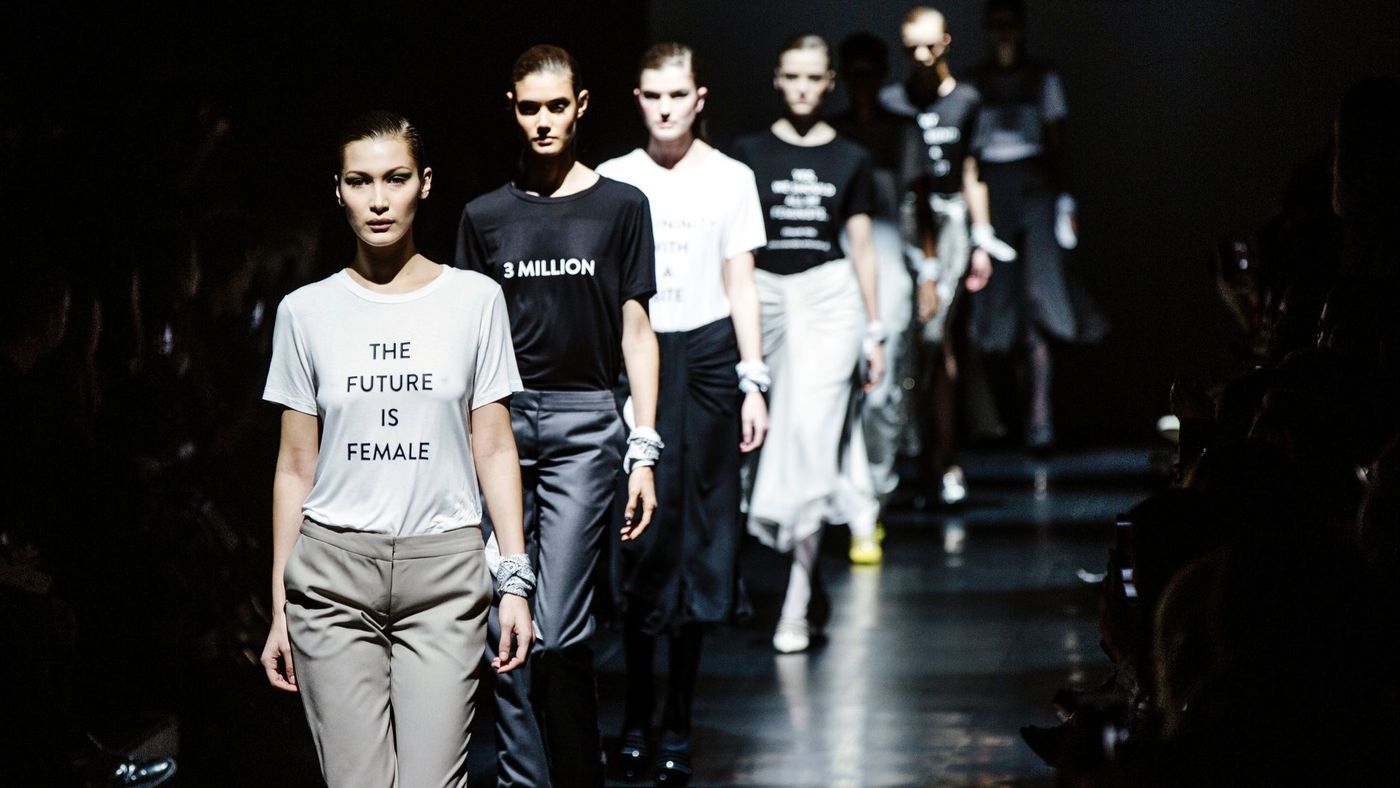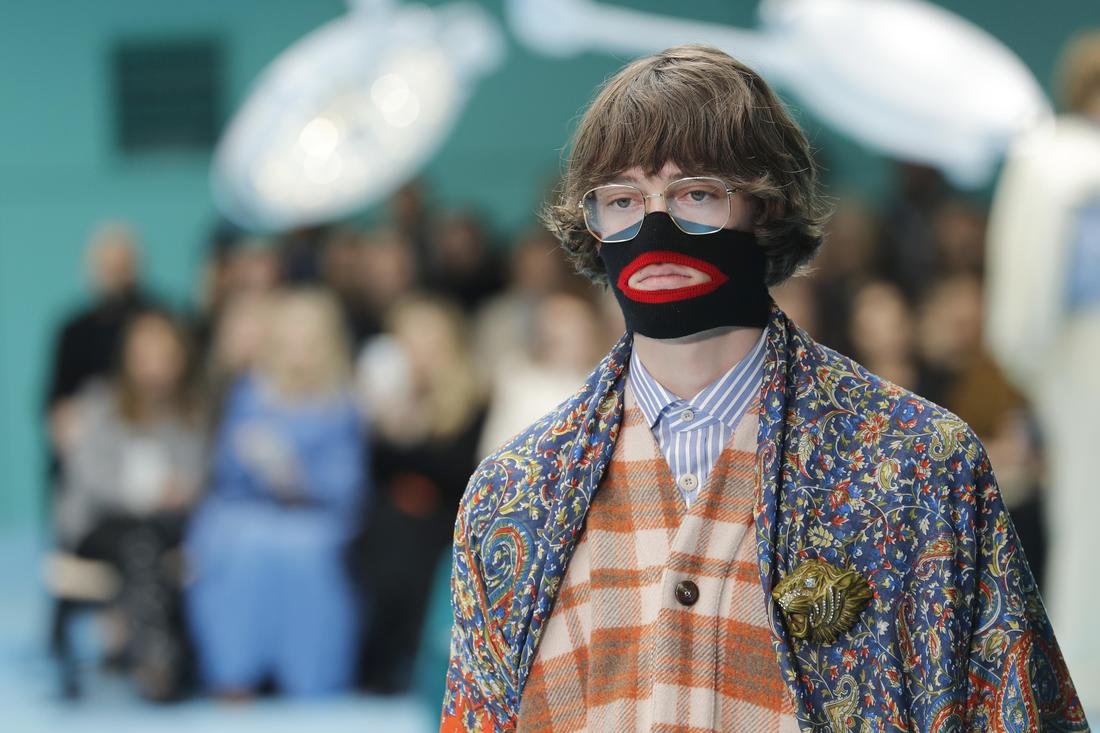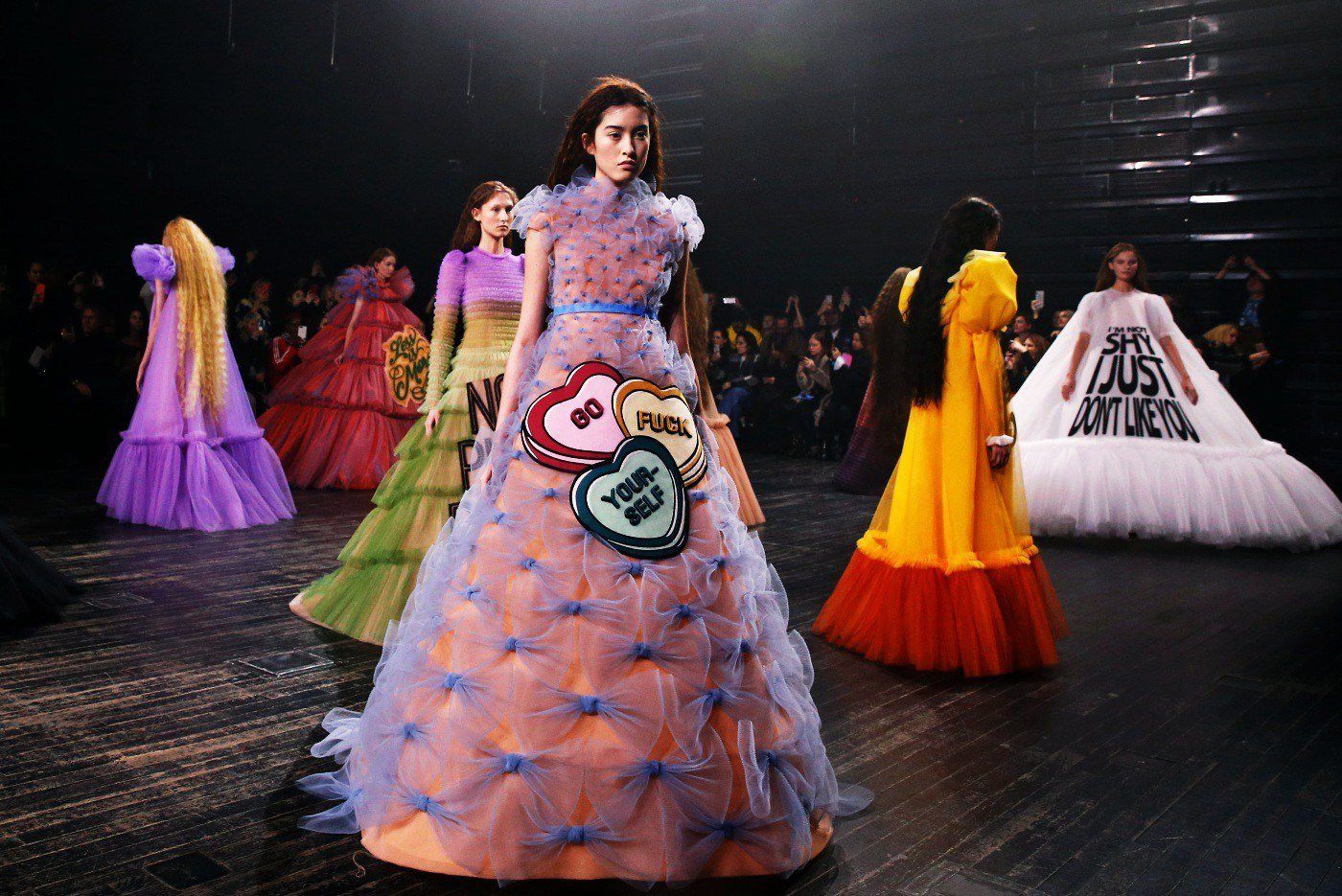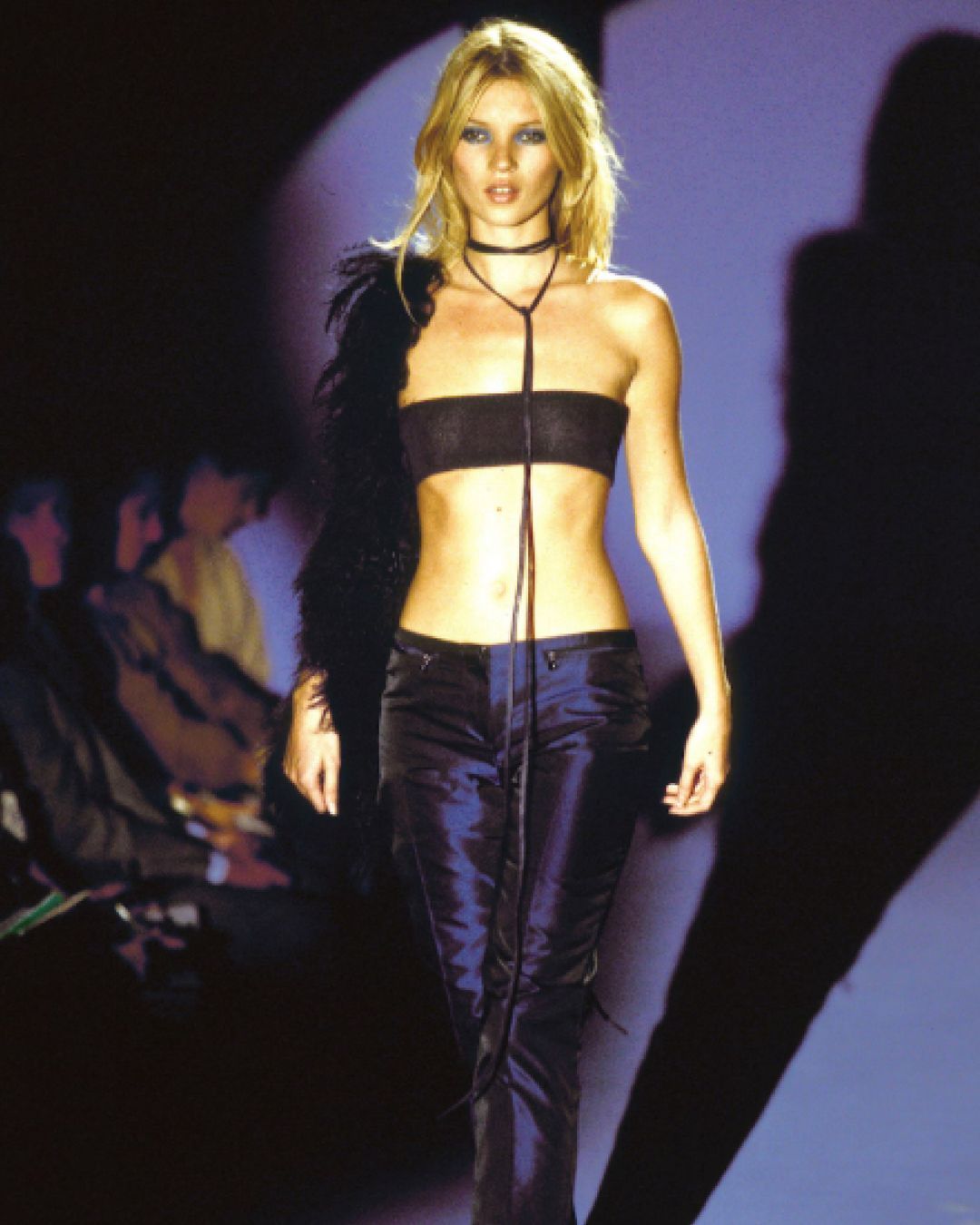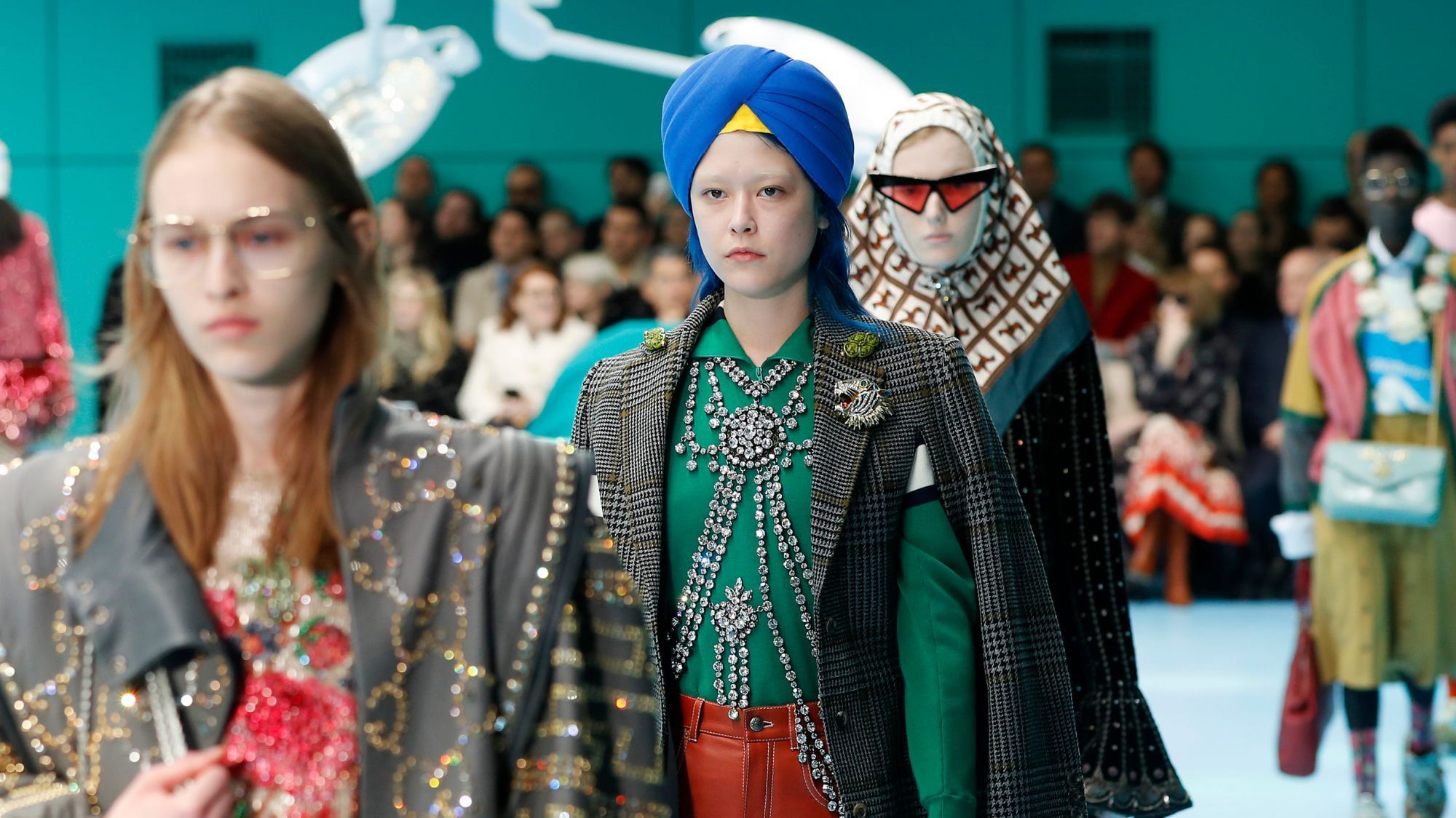
Will This Age Of Political Correctness be The Death of Fashion? A discussion on whether these newly-implented standards are killing or bettering the industry's creativity
The views and opinions expressed in this piece are those solely of the author and do not necessarily reflect the position of nss as a whole.
In the year of our Lord 2019, we have all become sensitized to the movement that has been known as political correctness, specifically in regards to the world of fashion. Throughout the past decade, we have witnessed a shift in awareness and sensitivity towards race, gender and culture within the industry. With the ever-growing presence of social media, we’ve seen the impact of the movement on brands through the occasional barbaric method of social media blogs and watchdogs such as Diet Prada among others. In the past year, Prada has come under fire for their keyring resembling blackface, Gucci angered Sikh tweeters with the creations of a Sikh turban as an accessory and Stefano Gabbana’s infamous ignorant race comments has finally cost D&G the loss of an entire production in Shangai and not to mention countless Asian consumers. Since then, some of these producers have been forced to take a hard look in the mirror and analyze their modus operandi and as a result have implemented the necessary changes such as a more diverse staff, scholarship programs etc.
These are just some of the cases and outcomes we’ve witnessed in the past few months, and although of late the integrity of one the largest watchdogs Diet Prada’s has been called into question, this conversation is not about that. This dialogue is about the effects of political correctness on fashion’s creativity.
Many debate that the implementation of the concept is restricting and ruining fashion’s creativity:
We live in violently moralistic times, destroying freedom of expression and invention in the name of a distorted idea of freedom of expression. Censors are trying to turn fashion into something terribly intelligent and necessarily political, denying its frivolous, silly and distracted nature - Fashion Critic, Angelo Flaccavento.
While others argue that it may only be better for awareness:
From the way that clothes are manufactured and consumed, to the way that they are promoted and even experienced, fashion continues in theme and image what violent colonialism started…If individuals want to wear clothes that knowingly hark back to colonial oppression, no-one will stop them but they might expect to be asked about what they were thinking - stated Dr Royce Mahawatte, Senior Lecturer in Cultural Studies at Central St Martins.
However, throughout the observation of these constantly occurring social media storms, I would debate that the movement is resulting in both of these impacts.
What has caused much of the ongoing conflict in the industry is the demand for fashion to speak with a more intelligent and self-aware voice as opposed to one objective and left open to interpretation like that of the average artist. In turn, this has called into critique the fashion industry’s right to the declaration of freedom of expression. This political metamorphosis is in constant conflict with itself and the industry’s reputation of producing superficial facades, but also with what has come to be known as the fashion industry’s evil step sister, the fast fashion industry.
The idea of fashion constantly being on the limbo of capital and common F is what has been one of its biggest weaknesses. Fashion designers at times aren’t entirely held to the same standards as visual artists partially because of the industry’s ability to reproduce ‘masterpieces’ in simpler, cheaper, versions that are often cherished more than the original by consumers. This along with the concept of how the industry of recent has been exposed by these social media watchdogs for dishonesty, appropriation and other acts of treason have landed us in an unsteady position. These may not have been accurate image reflections of the entire industry, however on many occasions, the good has suffered for the bad. It has seemed to be difficult for consumers to give designers the same objective palette used by artists out of fear of it being abused. Parts of the industry have become like a superhero hesitant and unable to use their powers.
According to Vogue Italia’s former editor-in-chief the late Franca Sozzani, “Fashion isn’t really about the clothes, it’s about life. It has the ability and responsibility to use its power to highlight issues and force them into the public conversation.” However, this line of thought raises the question: should such power and creativity have morals? Should fashion have societal boundaries?
Close your eyes and imagine a world where Michelangelo and Caravaggio were censored from topics like nudity and religion...quite boring right? Now close them again, and imagine a world where fashion designers had little to no cultural or moral boundaries. That would probably result in fashion photographers using refugee camps and poverty-stricken communities as the backdrop for high fashion editorials, which would probably even birth a “poverty-chic", or “migrant-chic” trend. This might even result in a series of brands seemingly launching products remnant of blackface and other historically traumatic imagery for publicity or commercial gain. Wow, sounds horrific right? Well, believe it or not, I just described some of the happenings of the past decade. This is not to say the entire industry is corrupted, there will always be the good and the bad, but will this new standard for brands ruin the industry or simply raise the bar?
Of course, an ostensibly transparent wall in the earlier days of fashion did gift us with great collections with profound meanings from masterminds like Alexander McQueen, John Galliano, Hussein Chalayan who challenged the norms. Great designers have always used sartorial semiology as a transformative variable in collections, but the reality is that this was not always the case, not everyone’s intent is purely artistic, some simply just want to be on trend. And back then, the wall of political correctness did exist. Designer’s like McQueen and Galliano were accused many times of being misogynist and even mental.
The only difference was that the wall was not yet built between the brands and consumers, so disruptors like McQueen and others didn’t have to worry about staying within the lines as it wasn’t playing such huge part in determining the brands’ commercial success. However today, brands have to answer to a different generation, while the main objective of the Boomer generation was to promote progressive values, Millennials want to minimise hurt feelings and promote tolerance and inclusivity.
Generation Y has cleared the dust from their parents’ eyes, rounded up their troupes and have gathered their emoji ammunition. Some with a fiery vengeance for reparations, and some with a fiery vengeance just because. The battlefield is wide and full of smog. On one end stands the army of angry millennials, with knitted eyebrows, Balenciaga sneakers and gender-neutral garbs. Fingers positioned right above the triggers of their loaded keyboards. On the receiving end, the system, the man in the suit - a team of split luxury groups and corporations. Some submissive, while others tenacious, waving the flags of their net worths as a defence. Midfield lies the faith of fashion, what it is today versus what it will become. I only see this battle ending in one of two ways. Both ways resulting in a millennial victory as producers will bow to the needs of their consumers, spiralling in the death of ‘Fashion’ and culminating in its rebirth.
Fashion, as we knew it in the last ten years, will never be the same as it will be in a few years to come. However, the direction of its resurrection and reformation will depend mainly on the younger generation. Either the millennial military’s ego will eventually cloud their judgement, resulting in an industry of cowardly creatives too afraid to push the boundaries for fear of being boycotted or cancelled. Or the “military’s” cutthroat method will efficiently filter the delinquents and pressure the industry into producing a generation of creatives and corporations forced to dig deeper than the surface which would probably essentially gain the industry its respect as an art form.
Either outcome is equally probable, but I do suppose only time will tell. In the meantime, pick a team, and be sure of it.










































